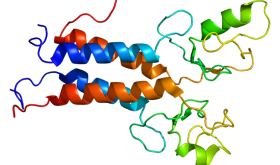Featured articles

Monoclonal validated for Post-Translational Modification studies
September 1, 2015 By Ana Arraztio Leave a Comment
Knowing the Human genome better has allowed major advancements in Personalised Medicine. Nowadays, we can know (if we want) the likelihood to develop a given disease and/or how we will react to different pharmacological treatments. Examples of this include diseases like breast cancer (for diagnosis or estimation of likelihood) and lung cancer (for response to treatment), […]
Latest Articles

How to get clear best-quality data in IP and WB protocols?
August 27, 2015 By Ana Arraztio Leave a Comment
Immuno-precipitation & Western Blots often suffer from heavy /light chain blotting, contamination, and ongoing interferences. This can prevent from obtaining biologically-relevant data in a given experimental model, especially when the target of interest has a size similar to the IgG molecules that may remain. Getting rid of these “artificial” bands can be tricky. In this post, you will discover the robustness […]

Oxygen and miRNAs in Cosmetology and Dermatology
August 25, 2015 By Ana Arraztio Leave a Comment
A recent review by Nadim et al. casts some light on a Cosmetology and Dermatology, where circulating biomarkers, though studied to a certain extent so far, are yet unknown for many skin models. (1) A first element to have in mind when considering the skin-related experimental model is the “Oxygen level”. Oxygen levels may contribute to […]

Array profiling to study PPAR-alpha in progenitor cell
August 14, 2015 By Ana Arraztio Leave a Comment
Peroxisome proliferator-activated receptor alpha (PPAR-alpha also known as NR1C1) regulates a myriad of biological processes. It is a key modulator of lipid metabolism. Vergori, L. et al. have shown in murine models how PPAR-alpha regulates endothelial progenitor cell maturation and myeloid lineage differentiation via a NADPH oxidase-dependent mechanism. (1) All the data described in this publication suggest […]

Phosphorylation studies made with Antibody Arrays
July 31, 2015 By Ana Arraztio Leave a Comment
Oropharyngeal squamous cell carcinomas (OSCCs) can be either Human papillomavirus (HPV)-positive or HPV-negative. Profiles of druggable Receptor Tyrosine Kinases (RTKs) are different in both groups, as shown in a paper by Cortelazzi, B. et al. The authors chose a cohort of 17 HPV-positive and 59 HVP-negative Formalin-Fixed OSCCs, in order to study E5 expression and RTK alterations. RTK […]

Normalisation assays in biomarker studies – all’s well that starts well
July 20, 2015 By Ana Arraztio Leave a Comment
The normalisation of quantitative assay data is critical when interpreting effective biological system status. With cells grown in culture and lysed, a simple total protein determination such as the Bradford assay (developed by Marion Bradford at the University of Georgia in 1976) can be enough by giving an estimate of the total cellular proteins. However, this […]

Mambalgin 1 – Blocking ASIC channels in pain pathways
July 20, 2015 By Ali el Baya Leave a Comment
Acid-Sensing Ion Channels (ASICs) are neuronal voltage-insensitive cationic channels which are activated by extracellular protons. They belong to the ENaC/Deg superfamily of ion channels. Up to now 6 members of the ASIC family have been identified: ASIC1 – ASIC 4, and the splice variants ASIC1a, 1b and 2a, 2b. The ASIC family members are trimeric […]

Keen to work with the best quality nucleosomes?
July 17, 2015 By Ali el Baya Leave a Comment
Nucleosomes are basis units of DNA packaging in eukaryotic cells. A core particle (mono-nucleosome) consists of a segment of DNA called core DNA (147 bp in length) wound around a histone octamer (Fig 1.). Histone octamers are made up of 2 copies of the the core histones H2A, H2B, H3, and H4. These mono-nucleosomes are […]

8 criteria for selecting your ELISA kits
July 16, 2015 By Nathalie Bervas Leave a Comment
Biomarkers specialists are often asked to select an ELISA kit for researchers: with thousands of ELISA references available on the market, the choice can be tricky regarding proteins for which several kits available. When researchers have to choose a new ELISA kit, the price is regularly the first parameter of selection. But my experience with long term projects […]

Focus on Actin detection and Actin binding proteins
July 15, 2015 By Ali el Baya Leave a Comment
Actin can exist in two forms: Globular subunit (G-actin) and Filamentous polymer (F-actin). Both forms of actin interact with a plethora of proteins in the cell. To date there are over 50 distinct classes of Actin-Binding Proteins (ABPs), and the inventory is still far from complete. Actin Binding Proteins allow the actin cytoskeleton to respond […]

Basics about insulin and dedicated research tools
July 14, 2015 By Ana Arraztio Leave a Comment
Diabetes is a major health concern. And its research can be a nightmare sometimes. tebu-bio strive to offer a comprehensive range of research tools and services to study Obesity, Diabetes, and Metabolic syndrome (including pancreatic islet cells), and tools to unravel signaling mechanisms in insulin secretion. Anyhow, it might be good, though, to go back to the […]









